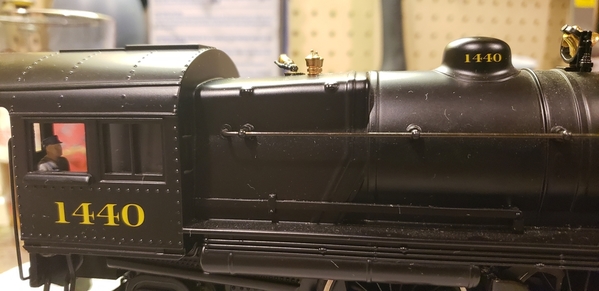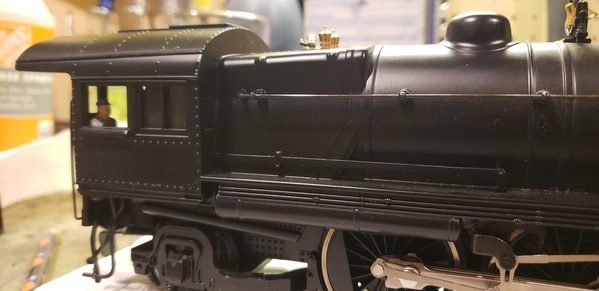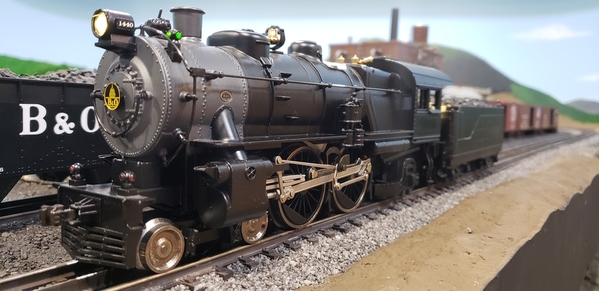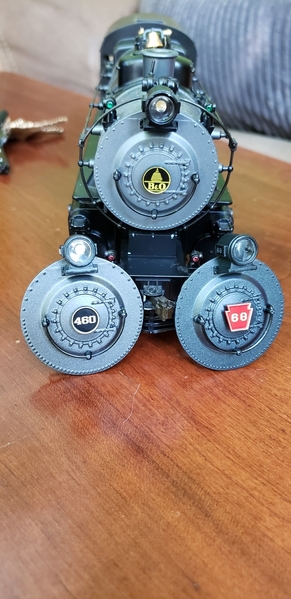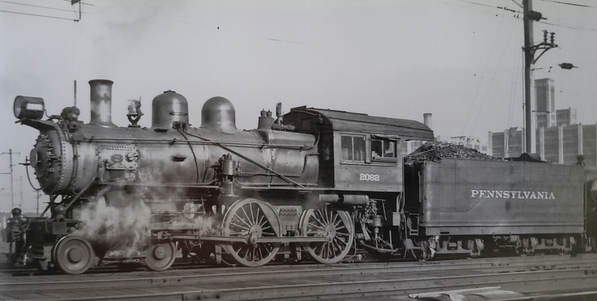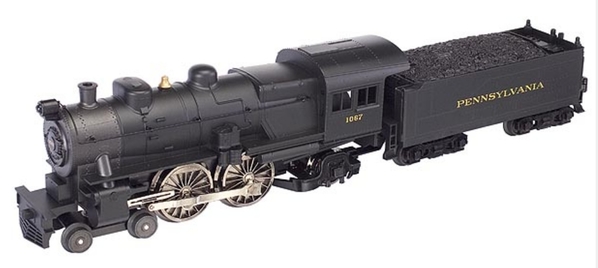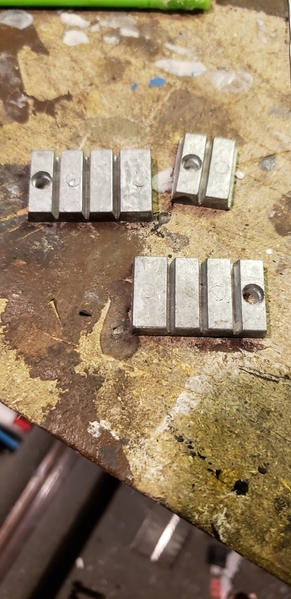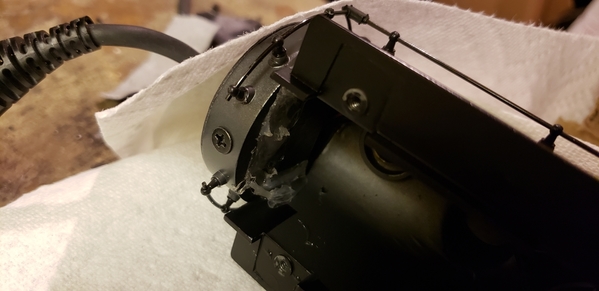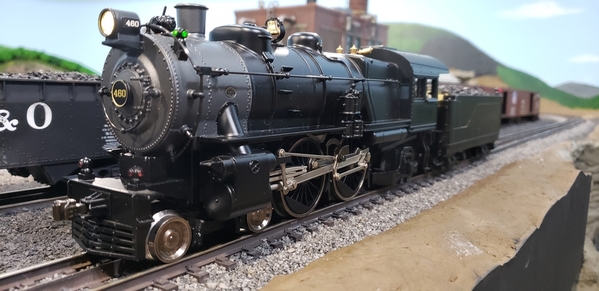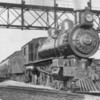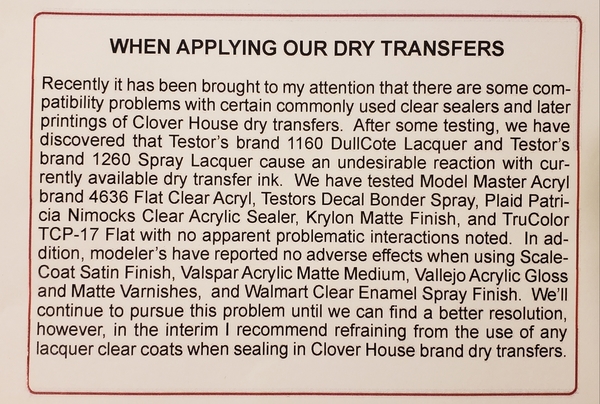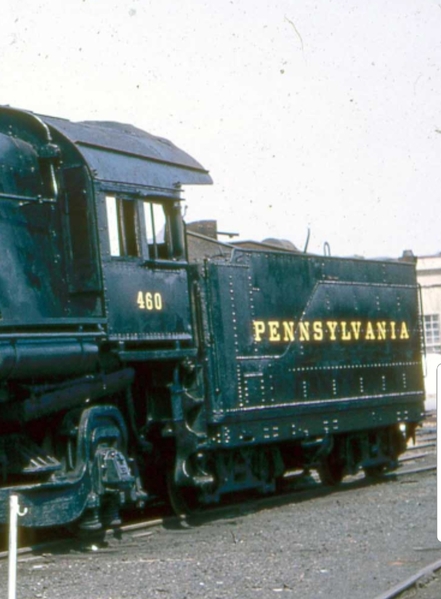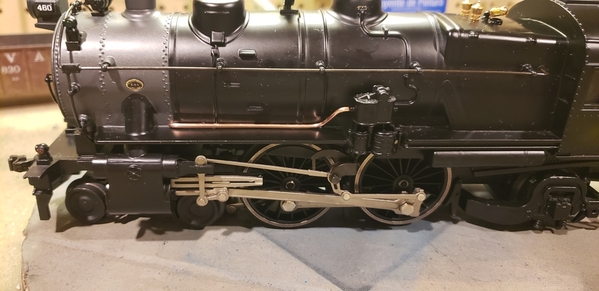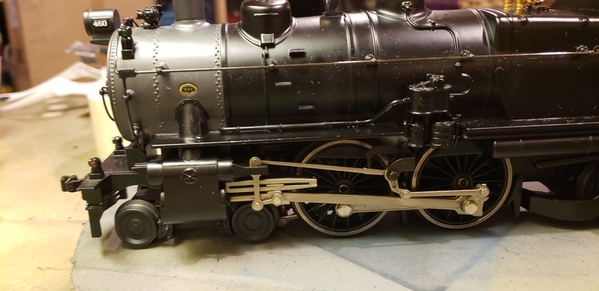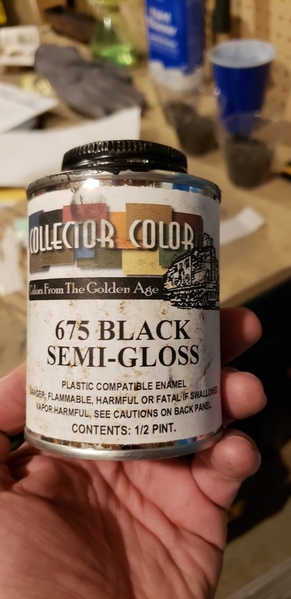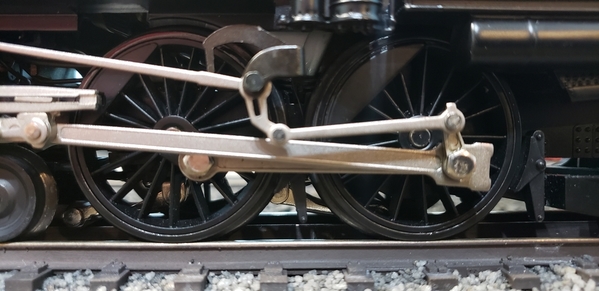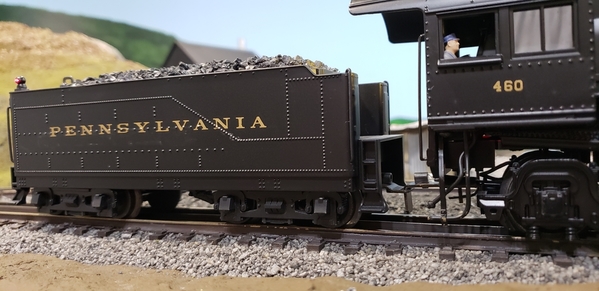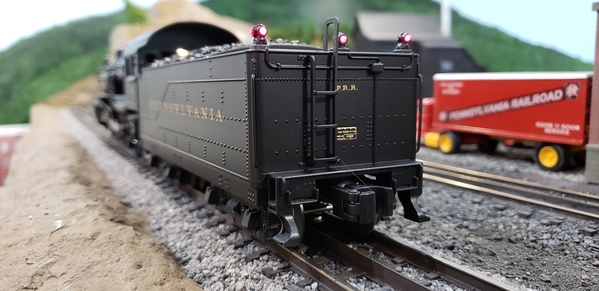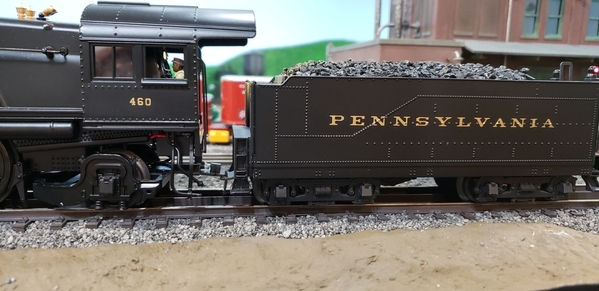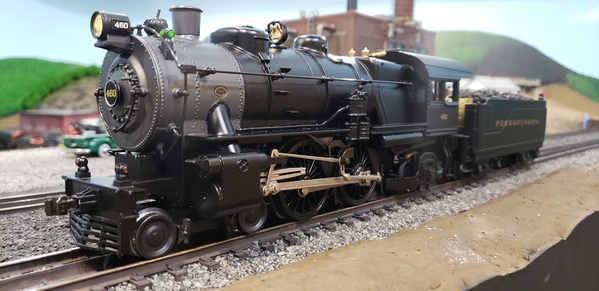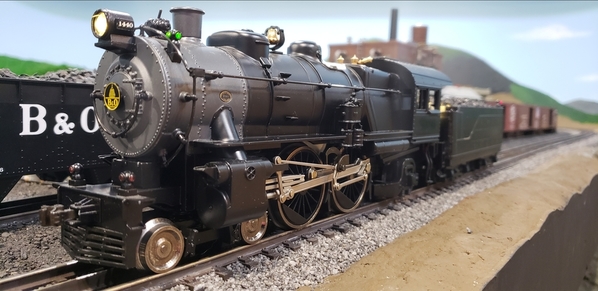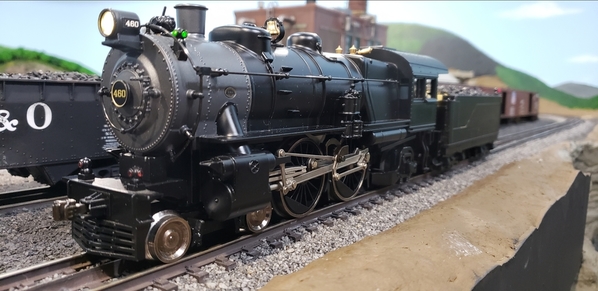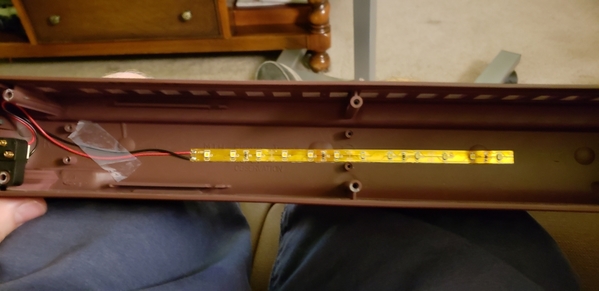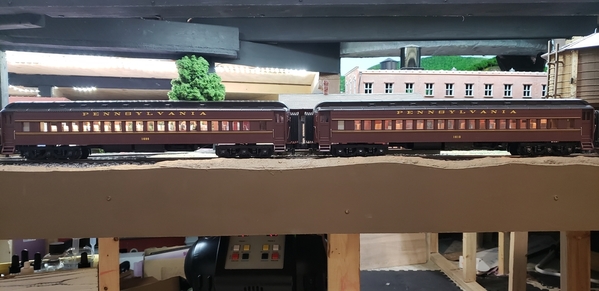I have decided to try to convert my legacy Atlantic from B&O markings to a PRR E6 Atlantic. With the new Atlantics starting to show up, including I believe a PRR in 460 with keystone plate, and a 68, the topic is apropos!
I removed the decals (or is it paint?) using CRC Lectra-Motive to start and then buffing them away with a dremel buffing wheel.
I was surprised and kind of excited about how well it worked. It did not remove the black paint. While there are faint shadows of the letters I think they won't be noticeable after the new lettering is applied and over coated.
The other effect of the buffing is that the area is now shiny but I think that is more conducive to application of the new decals.
Before (note cab and dome):
After:
Last pose with B&O graffiti (I kid I kid 😛😂):
I ordered a new boiler front from Lionel parts. It's the Legacy 460 with the round number plate. I wanted to use the round plate and also just do the simple Pennsylvania letters on the tender without the pinstripes. However, from looking at photos of the prototype, I am guessing that the keystone boiler front number plate was added at the same time the tender pinstripes were dropped.
Question 1: did PRR 460 ever exist with round plate and no pinstripes on tender?
Question 2: did any PRR E6 Atlantics exist with round plate and no pinstripes on tender? I am not really concerned with staying true to the exact life of the 460.
Stupidly though I also ordered another Lionel Atlantic boiler front with the Keystone plate, with number 68 (the TMCC version) so I might just use this one if it will fit.
I suppose the 460 keystone plate might become available in lionel parts soon when the newest legacy version arises seemingly soon. But I don't care about the specific number.
I also ordered microscale PRR steam decals. Question 3 would be does anyone have any tips for applying these? I am pretty apprehensive about this.
Question 4: are there any O scale PRR steam stencils available to paint the lettering with an airbrush etc? I noticed that the Pennsylvania lettering is going to go right across the horizontal line of rivets on the tender which I am guessing could be trouble with decals. Again any tips greatly appreciated.
Long post, l know, with many questions. I hope some of you enjoy this project with me! I've never done this. Wish me luck!




